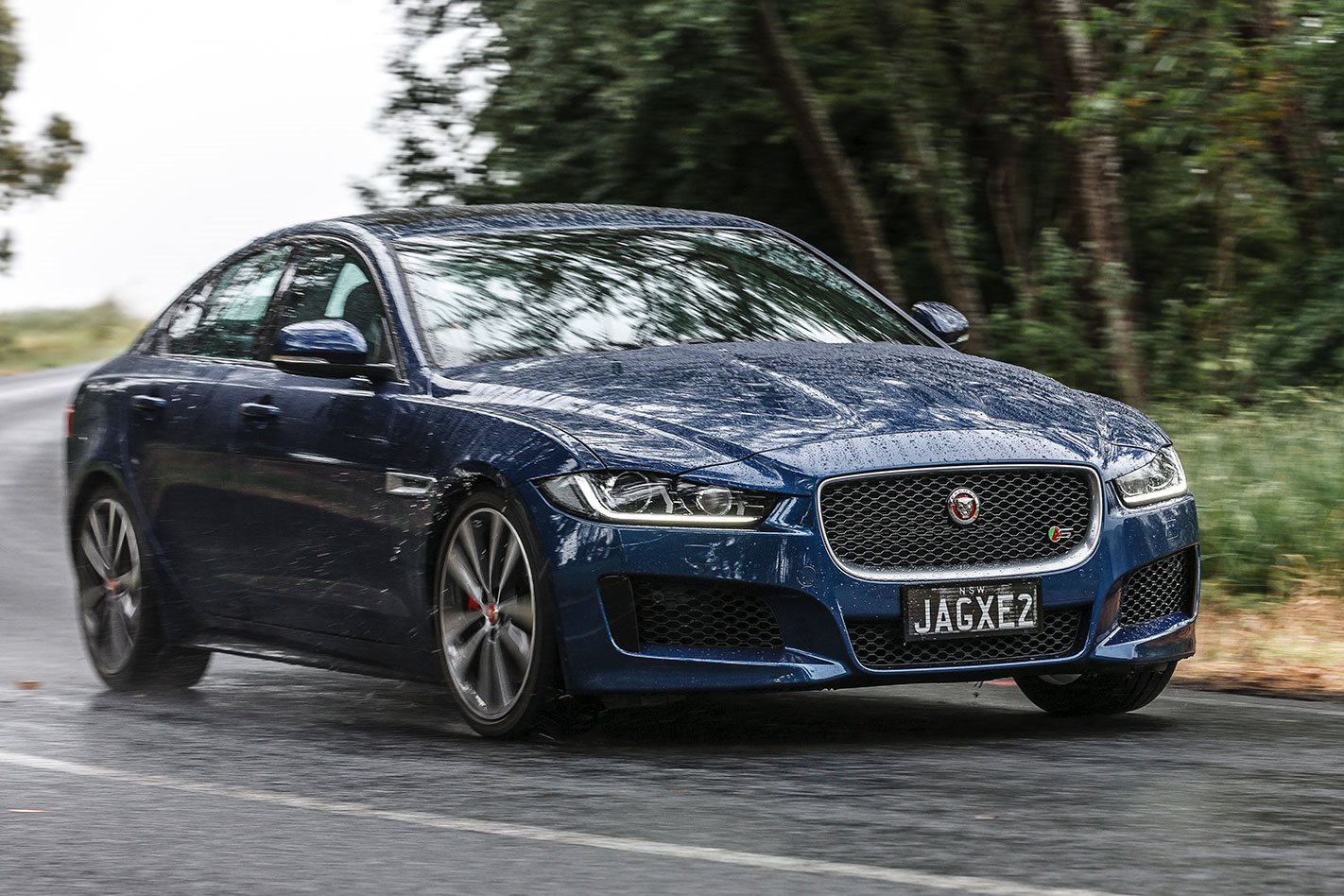Jaguar is on one heck of a cull. We recently featured the F-Type in Driven To Extinction, but the knife’s going way deeper than the coupe and roadster.
Shortly after revealing its F-Pace 90th Anniversary model in May, Jaguar’s Castle Bromwich plant had already assembled the very final examples of not only the F-Type but also the XF Sportbrake and the car you see here, the pert XE sedan.
JLR’s CEO, Adrian Mardell, went on to inform analysts that Jaguar would axe everything but the F-Pace SUV within the year with the withering comment: “none of those are vehicles on which we made any money.” Indeed, in the most recent quarter, 86 percent of JLR group sales were accounted for by the LR bit, Jaguar contributing a paltry 14 percent.
The plan is to push upmarket towards Bentley with an all-electric line-up based on the long-wheelbase JEA EV platform. The company is targeting a production figure of less than 50,000 per year, ditching what Mardell described as “lower-end products”.
For a lower-end product, the Jaguar XE was certainly conceived with some ambition. Targeting the BMW 3 Series, the Audi A4 and the Mercedes- Benz C-Class, the XE featured expensive aluminium suspension componentry and a bonded and riveted aluminium unitary chassis, making its rivals appear somewhat proletarian.
“AT LAST! A Jaguar good enough to rival the Germans” screeched our July 2015 headline on our first full test of the XE. John Carey was clearly taken with the Ian Callum-styled car: “Now that we know that the XE drives as well as it looks, we’re ready to call this car the beginning of a bright new era for Jaguar. It’s simply too good to ignore.”
Carey was both right and wrong. The XE was a gem of a premium sedan, finishing second at COTY 2016. Heck, with a better-finished interior it might well have pipped the Mazda MX-5 for the crown that year. It deserved better than it got, and the sales figures make for some fairly sorry reading. Take 2018 as an example. With just 524 registrations here in Australia, the XE was outsold by the Alfa Romeo Giulia. The Audi A4 sold 1625 units, the 3 Series 3079 units and the C-Class a whopping 5055 units.
Like many of Jaguar’s products, it benefited from a huge initial investment, but then somewhat withered on the vine. Ingenium engines replaced the Ford-based units in 2017, but otherwise it enjoyed little in the way of updates. Vanity projects like the 300-unit SV Project 8 weren’t the answer. The XE’s best year was 2016, when it registered 44,095 global sales. By 2022, it was selling less than 600 units annually in Europe and 12 brave punters stepped up that year in the US.
Why did it fail? It tried to take on the industry’s biggest players with a fraction of their development budgets. It looked and drove brilliantly, but then Jaguars always did. Doing that while providing great ergonomics, reassuring build quality and electronic architectures that stayed ahead of the pack is an altogether tougher brief. Ultimately, it’s one that Castle Bromwich could never hope to answer.

Aussie sales
- 2015: 580
- 2016: 1524
- 2017: 791
- 2018: 524
- 2019: 394
- 2020: 196
- 2021: 144
- 2022: 56
- 2023: 58
- 2024 (YTD): 45
The almost win at COTY 2016
There are some COTY runners-up where the judges can barely point to a single shortcoming. The Jaguar XE was not one of them. John Carey’s report spoke of an underwhelming interior, awkward access through the rear doors, an underwhelming and thirsty 3.0-litre V6 that spoilt the handling balance, a lack of interior storage, cruise control that would overspeed downhill, short service intervals on the four-cylinder engines and so on. Perhaps we really wanted to believe.
We recommend
-
 News
NewsJaguar reveals big rebrand – UPDATE: Execs comment on response
Is it Jaguar or JaGUar? Whatever the case, the Indian-owned British brand is out to reinvent itself for an all-electric glow-up.
-
 Reviews
Reviews2019 Jaguar XE review
Jaguar has a crack at improving the liveability and simplifying the range of its C-Class rivalling XE
-
 Reviews
Reviews2017 Jaguar XE Range Review
The mid-sized Jaguar XE sedan looks stylish, has terrific engines, and steers and handles brilliantly. It is more fun than premium German alternatives. Auto braking is standard.






